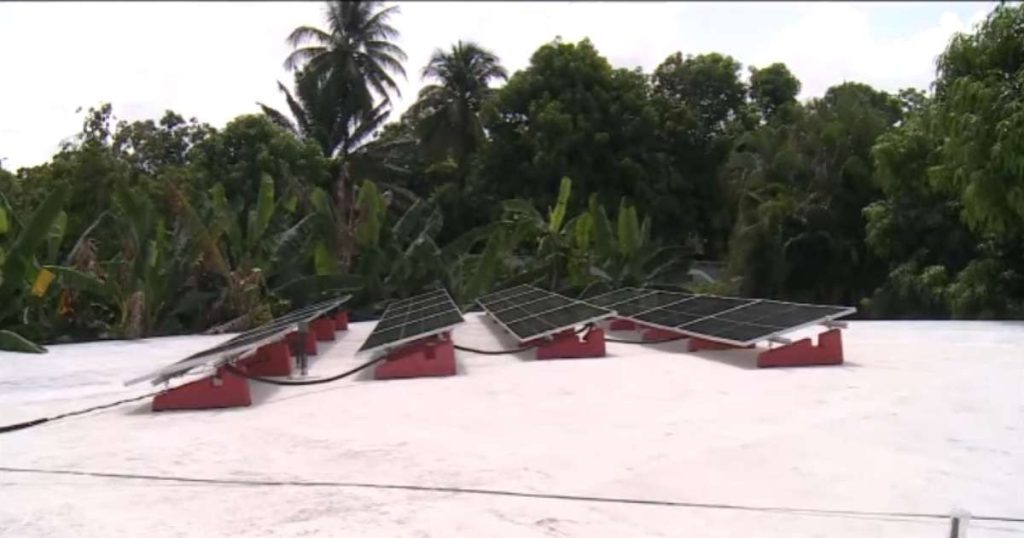Cuba is marketing imported solar panels without spare batteries to residential or government customers, according to an official from engineering services firm COPEXTEL.
45 photovoltaic systems installed in the Cuban capital, 30 of them are in the residential sectorHe noted that they are designed to pump power into the grid and without spare batteries, so they only work when it’s sunny. a report From Cuban television, official journalist Lazaro Manuel Alonso.
The report also mentions that among the shortcomings of these solar energy systems, The said company sells it for 55 thousand Cuban pesos Every 1 kW (four panels), is that in the event of a power outage, it is disconnected and does not deliver power to the national electrical system grid.
However, according to a Havana Electricity Union official interviewed in the above report, “This method has the added advantage that the customer has, at least for the time being, the supremacy in the electric service.”
For his part, the Copixtel official confirmed in his statements that these systems are considered an injection into the network.
He also explained that they are not isolated or hybrid systems and that they run “the idea of coming up with new intentions.”
“We have already worked with the isolated system in homes in the mountains and we will have to finance a system that covers all the others, with autonomy with battery banks, which are much more expensive, but we want to provide all these devices,” he further explained.
An interviewed family commented that they decided to install this system because they are high consumers and wanted to compensate by generating electricity to match their consumption and be within a comfortable payment rate.
But they said this practice does not give them the expected benefits because they continue to pay more than 2,000 pesos per month for electricity, even though they generate more electricity with these panels than they consume.
Another factor against them is the price of the excess power they pump into the SEN network of only three Cuban pesos per kilowatt-hour, and if there is a blackout during the day, the panels are disconnected and do not provide power.
This family decided to install eight kilowatts of photovoltaic cells (nearly half a million pesos) manufactured in China and brought to the island by an importing company that took five months from push to extraction from the port.
This method was approved in the residential sector of Havana in 2021 and the individuals who have managed to obtain it are a small number.
To date, the Cuban capital has 45 solar panels in operation by residential and international clients, 30 of which are in private homes, as recently reported by the commercial director of Havana Electric, Lisi Hernandez.
According to the directive, this method applies to customers who, after importing or purchasing solar panels in a COPEXTEL store, decide to install them in their property to consume the generated energy.
In November 2021, The Cuban company COPEXTEL, for the first time on the island, began selling solar PV systems to residents of the capital.including components, transportation, installation and assembly.
This method is applicable only in the island’s capital, as announced by Rolando Gómez Rondón, Director General of ECOSOL’s Energy Division, on that date.
“At this stage, it will be marketed only in Havana, where the buyer must reside, in order to guarantee the technical visit of the service, which includes installation and transportation. It is a way to protect the customer. It is expected that the service will extend to the rest of the country in the coming months.”
The director explained that these systems use solar panels and inverters that convert the available solar energy into electrical energy for consumption in homes, companies and industries, which saves electricity.
“It allows users to jointly generate electricity or inject energy in parallel, either for self-consumption or for transmission to the national electricity grid,” he stressed.
To request the installation of these systems, a space on the roof of the house or an available floor is required of 12.5 meters.
If it’s a roof, it should be concrete (lamella), and if it’s floor, it should be paved (filled or asphalt), and exposed to the sun all year round. It should be horizontal or in such a way as to allow the leveling of the solar PV system.
In August 2021, the Cuban government asked citizens Investing in a freely convertible currency (MLC) in the development of solar energy Led by the Electricity Union.
The Minister of Energy and Mines, Levan Aront Cruz, reported the creation of a bank account in the MLC “to provide the option of contracting certain kilowatt PV energy by natural and legal persons,” after which it will be deducted from the monthly account. The bill is equivalent to the energy generated by the power gained by that person.
Cuba has 40% delay in implementing renewable energy sourcesAlthough there is plenty of solar radiation on the island to power the photovoltaic panels, there are wind currents in many places to get electricity from wind turbines, and there is enough biomass to run bio-power plants.
Also, in July 2021, Permission to import photovoltaic systems and their parts and parts for natural persons exempt from customs duties In customs, a measure aimed at increasing the participation of renewable energy sources in the country’s electricity generation matrix.
Solar power can be an alternative to the desperate blackouts that have plagued the island in recent months due to the poor condition of thermoelectric plants and fuel shortages, but it is an expensive technology for the pockets of the majority of the Cuban population.

“Unapologetic tv specialist. Hardcore zombie trailblazer. Infuriatingly humble problem solver.”







More Stories
ASEAN 2045: A path full of opportunities and challenges – Special Offers | Publications
Maduro receives leaders participating in the ALBA-TCP Summit
Cuba: The United States responds with deception to refuse to collude with Israel